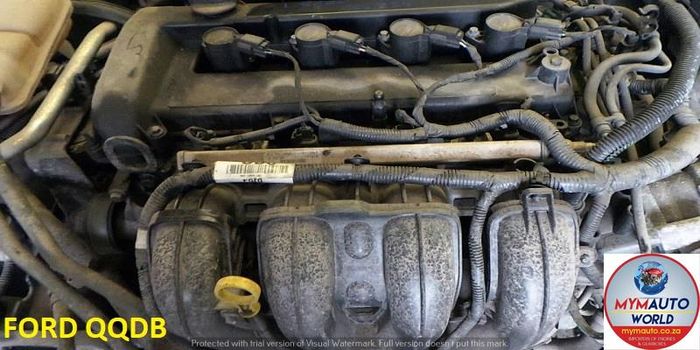Comprehensive Evaluation of a Subcompact Vehicle's Powertrain Capabilities
In the world of auto engineering, the powertrain of a subcompact cars and truck stands as a vital nexus where efficiency, performance, and innovation merge. From the engine's relentless pursuit of optimal efficiency to the transmission's smooth choreography of power circulation, every element plays an important duty in specifying the total driving experience.
Engine Efficiency Evaluation
In evaluating the engine performance of the subcompact car, a detailed analysis exposes its performance and power output under various driving conditions. The subcompact automobile's engine, a crucial component of its powertrain system, demonstrates good efficiency metrics. The engine's efficiency is noteworthy, as it optimizes fuel consumption without jeopardizing power delivery. Under typical driving problems, the engine runs smoothly, showcasing an equilibrium in between performance and gas economy.
Furthermore, when subjected to strenuous testing scenarios such as high-speed acceleration or uphill climbs, the engine shows resilience and responsiveness. Its power result stays consistent, giving ample velocity when needed. The subcompact vehicle's engine is customized to fulfill the demands of urban driving, where fast velocity and active ability to move are important.
In addition, the engine's style includes modern innovations that improve its performance features. Functions like turbocharging or variable shutoff timing add to enhanced power distribution and torque, improving the general driving experience. Finally, the engine efficiency of the subcompact car underscores its capacity to provide trustworthy and reliable power output throughout different driving conditions.
Transmission Efficiency Examination
Evaluating the subcompact vehicle's transmission efficiency includes evaluating its performance in sending power effortlessly across various driving problems. The effectiveness of a transmission system is essential as it directly affects the total efficiency and fuel economic climate of the vehicle. In assessing transmission effectiveness, factors such as gear ratios, shift timing, and the smoothness of equipment adjustments are taken into consideration. A well-designed transmission system must successfully deliver power from the engine to the wheels while lessening energy losses.
One usual approach utilized to assess transmission effectiveness is through dynamometer testing, where the power outcome from the engine is gauged at the input and outcome shafts of the transmission. By assessing these aspects, engineers can identify areas for renovation and optimize the transmission system for far better overall efficiency and effectiveness.
Gas Efficiency Assessment
The analysis of the subcompact vehicle's fuel effectiveness includes an extensive evaluation of its intake rates under various driving conditions. Fuel performance is a critical consider analyzing the total efficiency and cost-effectiveness of a car. By determining the amount of fuel taken in each distance traveled, commonly expressed as miles per gallon (MPG) or litres per 100 kilometers (L/100 kilometres), the performance of the subcompact vehicle's powertrain can be established.

Additionally, improvements in modern technology, such as crossbreed systems, regenerative braking, and automatic start-stop systems, have actually dramatically boosted gas performance in modern-day subcompact vehicles. Suppliers continue to optimize and introduce powertrain components to improve gas effectiveness while fulfilling efficiency demands and ecological guidelines. Assessing a subcompact car's fuel performance provides beneficial understandings for consumers seeking lasting and cost-effective transportation options.
Acceleration and Handling Assessment
An important aspect of reviewing the efficiency capabilities of a subcompact auto lies in examining its velocity and managing attributes. Acceleration is crucial as it figures out exactly how quickly the automobile can reach preferred speeds, influencing total driving experience and maneuverability in different traffic problems. opel corsa engine. Subcompact automobiles are usually favored for their nimbleness and dexterity, making velocity from dead stop and throughout overtaking maneuvers crucial elements to take into consideration
When it comes to managing, a subcompact vehicle's capacity to navigate edges, keep stability at broadband, and offer a receptive steering feel are extremely important. Tight city roads and winding roads need accurate taking care of to ensure motorist self-confidence and safety. Variables such as suspension tuning, weight distribution, and tire grip play considerable functions in determining a subcompact cars and truck's overall handling prowess.

Powertrain Components Summary
Upon diving into the complexities of a subcompact auto's performance, an extensive exam of its powertrain components is necessary to grasp the automobile's mechanical bases. The powertrain of a subcompact auto typically contains the engine, transmission, driveshaft, differential, and axles. The engine, frequently a smaller variation four-cylinder in a subcompact auto, is accountable for generating power by shedding fuel and converting the energy into mechanical force. The transmission, whether manual or automated, transfers this power to the wheels via the driveshaft. The differential permits the wheels to revolve at various rates when turning, enhancing maneuverability. Moreover, the axles transfer power from the differential to the wheels, enabling movement. Comprehending exactly how these components interact is crucial see post in assessing a subcompact automobile's total performance, efficiency, and driving dynamics. In the following section, we will certainly dig deeper into the specific duties and communications of each powertrain component to provide a comprehensive review of a subcompact auto's powertrain capacities.
Verdict
In final thought, the subcompact auto's powertrain abilities have actually been thoroughly assessed in terms of engine efficiency, transmission effectiveness, fuel effectiveness, velocity, and handling. The extensive testimonial highlights the significance of each part working with each other perfectly to provide optimum efficiency. Overall, the powertrain elements of the subcompact car have been discovered to be effective and healthy, making it a dependable selection for chauffeurs looking for a small and fuel-efficient vehicle.
In the realm of automobile engineering, the this website powertrain of a subcompact cars and truck stands as an essential nexus where efficiency, performance, and advancement assemble.In analyzing the engine performance of the subcompact vehicle, a detailed analysis reveals its performance and power result under various driving conditions.Evaluating the subcompact automobile's transmission effectiveness entails examining its efficiency in transferring power effortlessly across different driving conditions. Comprehending how Full Report these components function with each other is critical in analyzing a subcompact auto's total efficiency, effectiveness, and driving characteristics.In final thought, the subcompact automobile's powertrain capabilities have actually been extensively evaluated in terms of engine efficiency, transmission effectiveness, fuel handling, velocity, and efficiency.